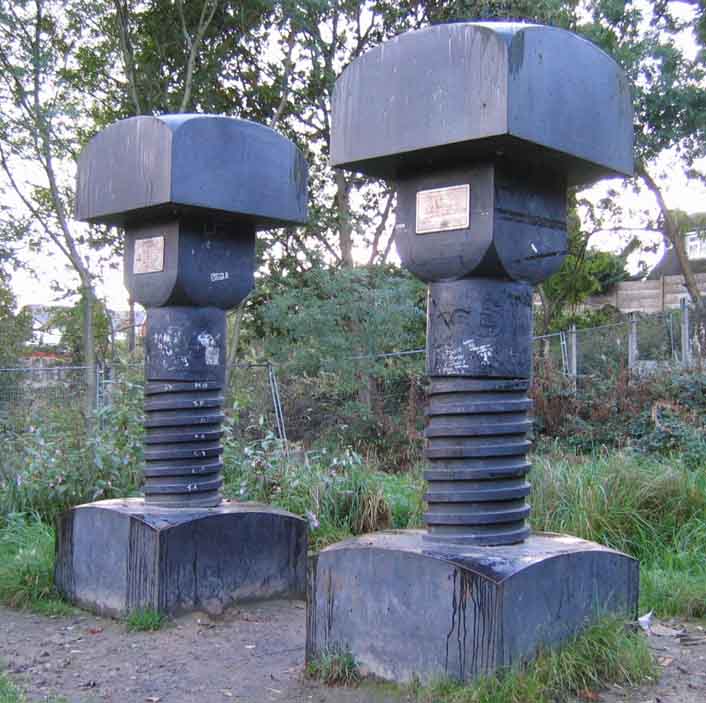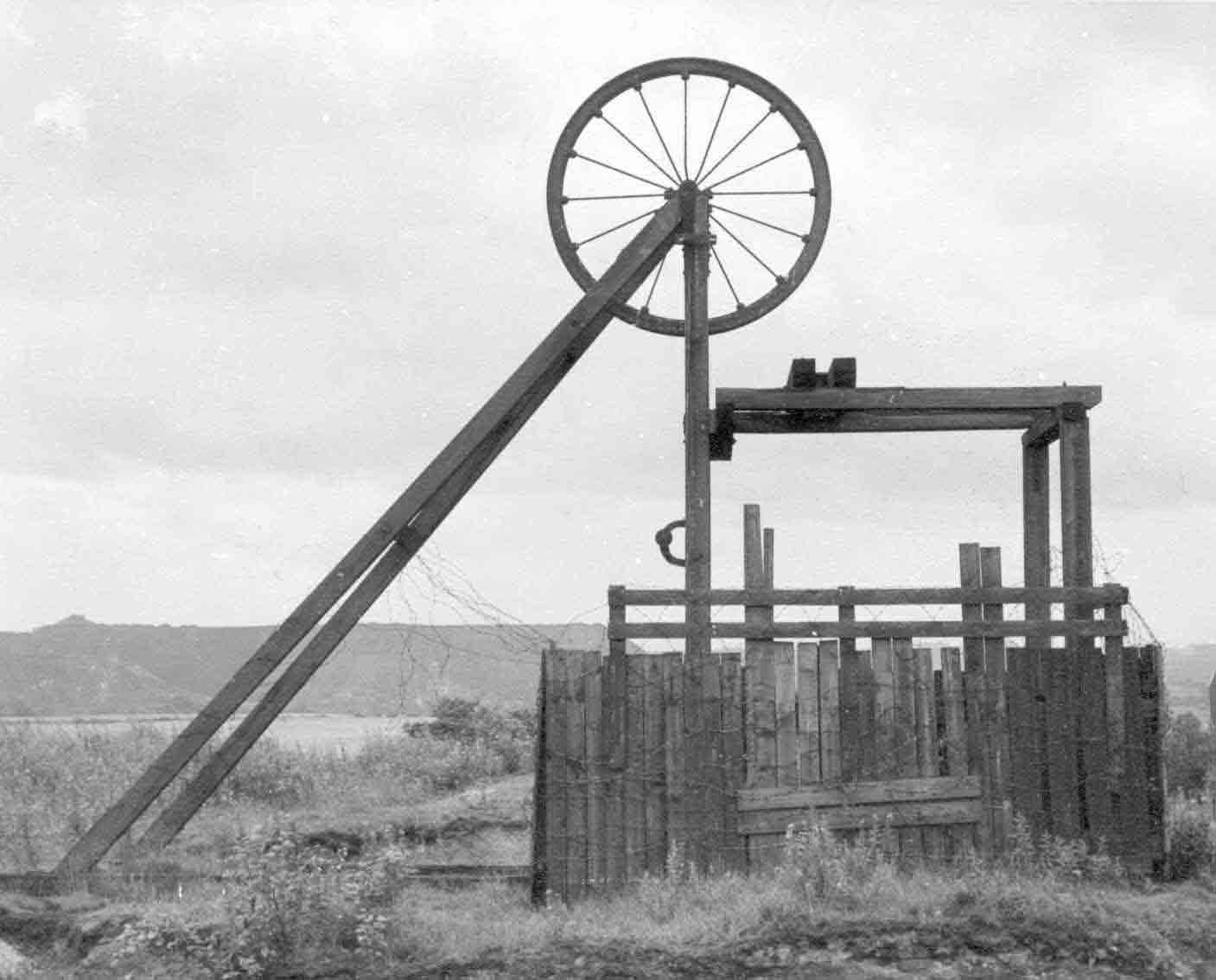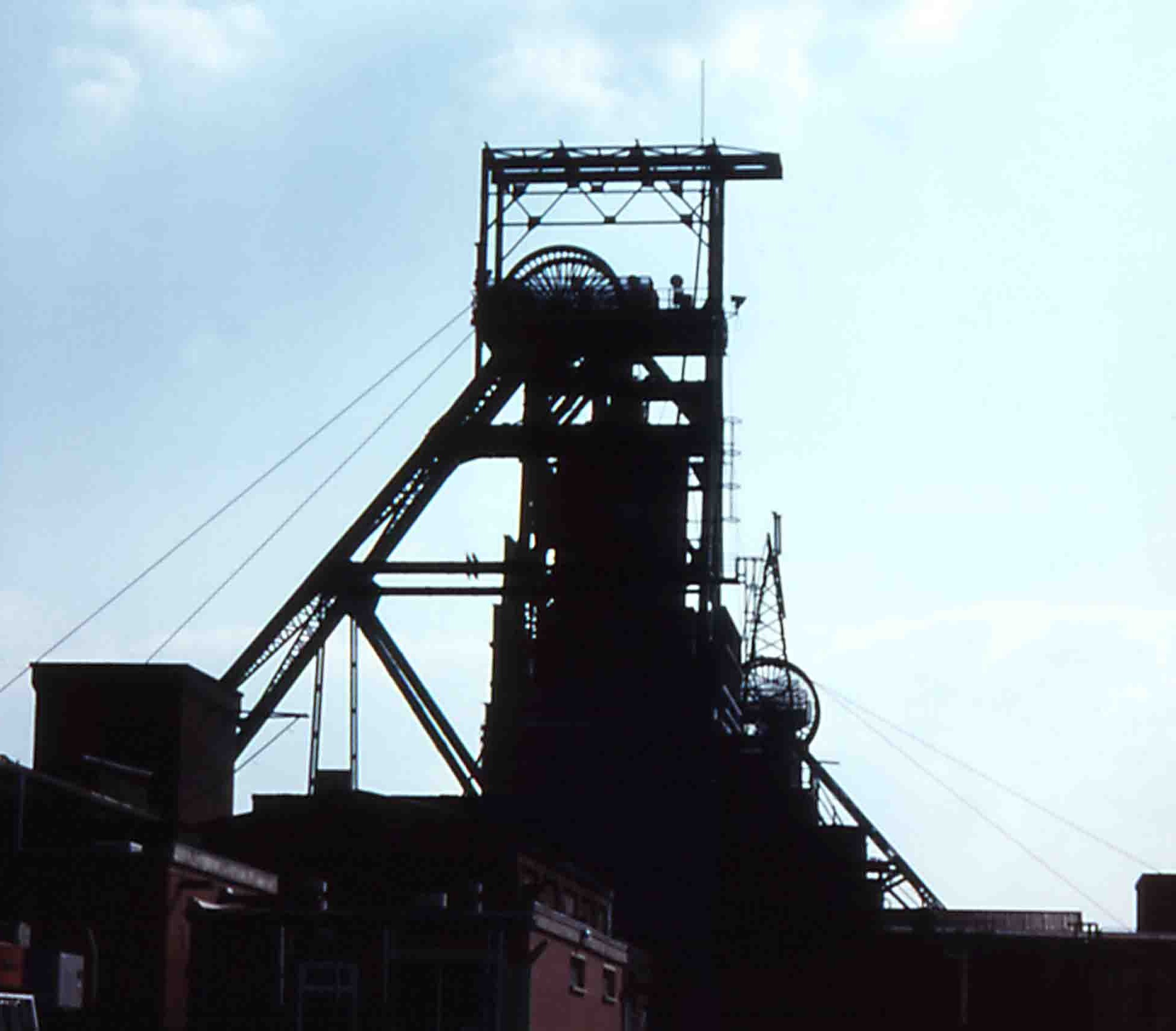 |
The Parish of Atherton |
 |
Understanding Atherton
The Atherton Crest To get some feeling for how our Bent ancestors lived, we need to understand the industrial origins and nature of the town. Farming and food production, commerce and trade were as important as in any small English village, but the armorial bearings of Atherton, granted on 29 May 1951 to coincide with the Festival of Britain, say it all, in a succinct heraldic summary of Atherton's socio-economic past. The sparrowhawk and lion's paw come respectively from the arms of the Atherton and Powys families who were once the cocks of the walk (sadly, the Chow family don't get a look in). But the real kings of Atherton were coal (the black diamonds), cotton (the golden shuttle beneath the hawk), and iron (the sable millrind: the x-shaped object in the bird's claw is the heraldic symbol for engineering). The cryptic motto means "by wisdom and by prudence". Mining, spinning and weaving, and iron working were recorded in Atherton earlier than the 17th century, but the industries were at their peak in the late 19th and early 20th centuries. A 25% sample of the 1901 census for Atherton shows that 46% of the population were in employment, and of these, 71% were in the coal mines, the cotton mills and the iron foundries. At this time the population of Atherton was 16,211 and had quadrupled during Victoria's reign. |
Nails Chowbent prospered in a way that distinguished it from the other villages in Leigh parish. The men from Chowbent and neighbouring Shakerley made nails. They also made ploughs and other agricultural ironmongery, but it was nails that characterised the town, and earned Chowbenters the nickname "Sparrowbills", after a type of boot nail. According to Lunn (1971) the trade continued for 600 years or more, with a taxation list for a well-to-do Alexander Naylor documented as early as 1332. The nail makers imported iron, but relied on plentiful local coal and water for their smithies, known in Chowbent as nailor's rocks. Their wares were in demand over a wide region of England, and were sent by pack horse to distant towns and cities. Examples of early 18th century nails were recovered from the ceiling of Chowbent Chapel during renovations and are preserved in the chapel archives. Across the 19th century, nail making dwindled as Atherton men adapted their iron-working skills to the requirements of the industrial revolution, with its need for machines, machine parts, tools, and above all, nuts and bolts. By the time of the 1901 Census there were few nail makers left in Atherton, and now the only reminder of Atherton's fame as a nail town is The Jolly Nailor pub on the corner of Market Street and Crab Tree Lane. |
|
Nuts & Bolts Iron bolt manufacture expanded at the expense of nail making. In 1843 there was just one nut & bolt maker in town, but by 1869 there were eleven foundries at work, including those of Thomas Smith and John Bullough. In 1901, 10% of the workforce were in the iron trade, and not all were men, for many young women recorded their occupation as "screwer in bolt works". Inevitably this essentially Victorian industry declined through the 20th century. 'But Smith Bullough Fasteners remains, and claims to be one of the few precision engineering firms in the UK still making bolts & nuts. A monument to the skill of the Atherton bolt makers was sited in The Valley, and officially opened in 1999 by Sam Little, then Mayor of Wigan. Memories of iron from the 1950s: the orange glow of fires in small brick foundries, clog irons sparking on the cobbles, end clippings from iron bolt rods fired from catapults. |
 | |
photo by Graham Wood, October 2004; graffiti by Atherton residents. |
Cotton Spinning Domestic manufacture of wool, cotton, linen and fustian textiles survived into the 19th century in Atherton. However, by the end of the 18th century new machines had been invented, steam power was taking over from water, and the factory system and industrial revolution were about to change the face of Atherton for ever. Blake's dark satanic mills were coming. But not without a fight; in 1812 Job Fletcher, a Chowbent Luddite, was hanged at Lancaster Castle along with 3 others for burning down a Westhoughton mill (Lunn, 1971). In the early 1800s the factories were mostly small buildings, and it was not till the middle of the century that the massive, flat-topped, rectangular piles of brick and glass, and towering chimneys came to characterise Atherton and other south Lancashire cotton spinning districts.
In 1901 the cotton industry was the largest employer in Atherton, with 33% of the workforce in the spinning mills, over 60% of whom were women. Census records reveal long-forgotten occupations, which now sound arcane, but were once in common parlance on the streets of Atherton: piecer, scavenger, doffer, slubber, doubler and carder. Memories of cotton from the 1950s: raw cotton fluff bowling down the street, mill girls in turbans and blue coats spilling out of the gates at midday, the night sky lit by banks of factory lights, old cane mill skips blazing on bonfire night. |
|
 | |
Coal Mining
Atherton lies in the centre of the belt of coal measures extending across south Lancashire from Skelmersdale to Oldham. In their heyday between the middle of the 19th and 20th centuries, the Atherton collieries were famed for their large tonnages of superior quality coal. No one knows when coal was first dug, but nail-making from the 14th century on, depended on the fuel easily dug from outcrops and shallow pits. In the early 17th century, mineral rights were a precious asset of the lords of the manor, and land leases excluded any right to mine coal (Lunn, 1971). But in 1776 the landowner Robert Vernon Atherton leased the Atherton coal rights to Thomas Guest from Leigh and John Fletcher from Bolton. From then on, the Fletcher name was synonymous with Atherton coal and collieries for over 140 years. Thomas Guest was succeeded by John Fletcher's son Ralph, a Colonel of the Yeomanry and autocratic coal owner with no sympathy for the aspirations of the working classes, but he knew his coal, and in 1825 made a first attempt to quantify the prodigious reserves of the Atherton coalfield.
At the end of the 18th century, the pits were numerous but small. Production relied on water and horse power, and came from shallow shafts and adits, worked till the nearby reserves were exhausted. But as in the textile industry, the advent of steam power changed everything, allowing efficient coal extraction and water pumping from previously unworkable depths. In 1840 the firm of John Fletcher & Others was established, and in 1845 the era of deep mining arrived in Atherton with the sinking of their Lover's Lane pit at Howe Bridge. By the early 1870s Howe Bridge, Chanters on Tyldesley Road, and Gibfield on Wigan Road were all mining deep seams that kept the collieries viable till the 1960s. Numerous pits at Shakerley, just east of Chowbent, also provided work for Atherton colliers, though none lasted the distance like the large Atherton collieries.
 | |
Coal tonnages peaked in the years prior to the Great War and in 1901, some 28% of the workforce were engaged in mining. The last years of deep mining also saw the reworking of very shallow seams by the National Coal Board's extensive opencast mines, but when the end of the coal era came, it came quickly. Howe Bridge, Gibfield and Chanters all closed between 1959 and 1966. There was still employment for Atherton miners in nearby Leigh, in the Bickershaw-Parsonage complex, till it too closed in 1992. In fact, many of us middle 20th century Athertonians could call Bickershaw our "home" pit, for we were born in the Firs Maternity Home, almost in the shadow of the Bickershaw headgear.
Memories of coal from the 1950s: wet coal dust glittering in the gutters, black-eyed colliers crouched at the bus stop, spokes of the giant pulley wheels flickering as coal was wound, the look of fear in people's eyes as the sound of an explosion rolled over Atherton.
| Atherton Home & Contents | ©Lancashire OnLine Parish Clerks | Lancashire Home |